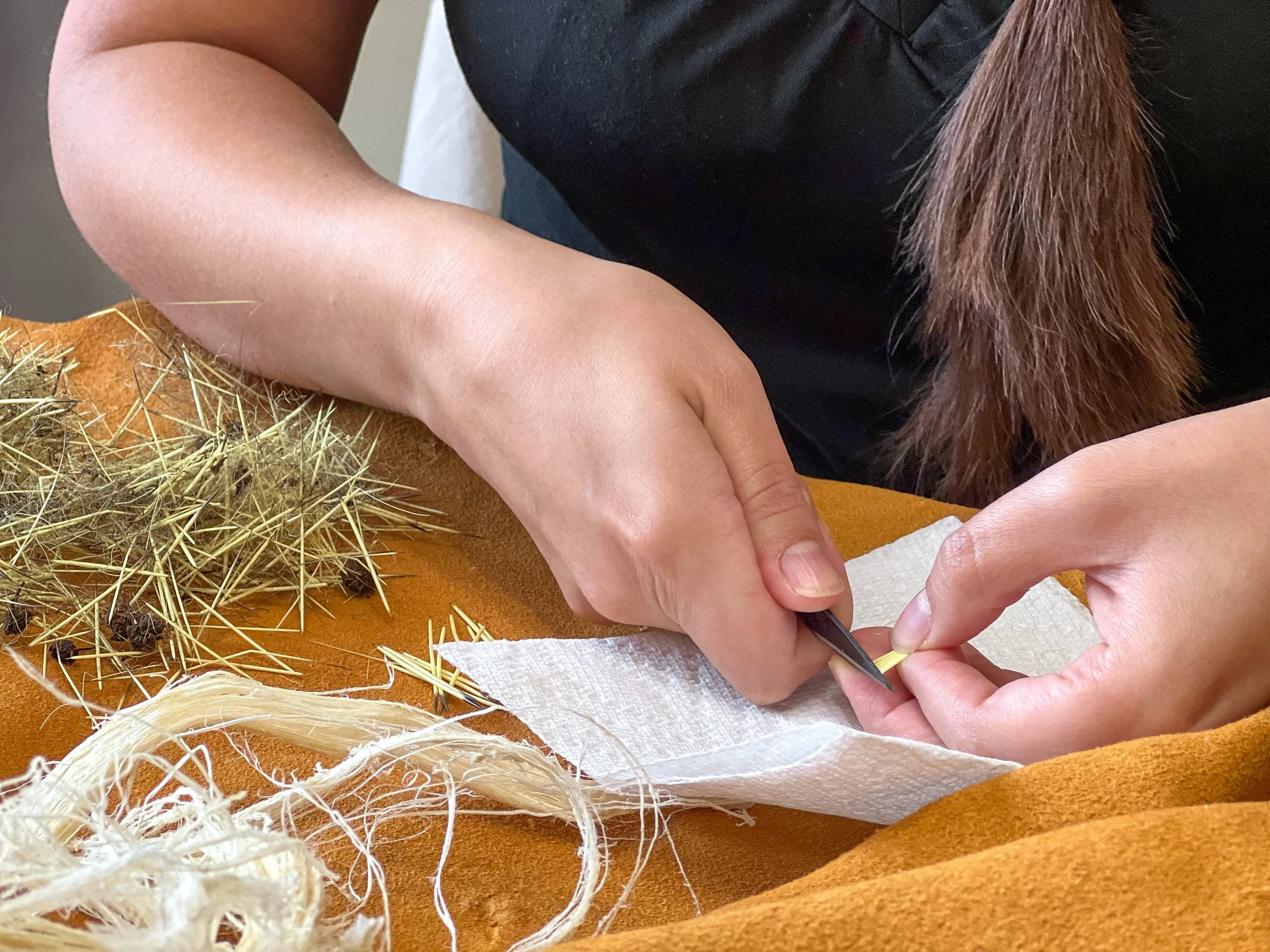Wipatapi Ohninnan
This project promotes natural materials used for porcupine quillwork. As an undeniable Indigenous artform, oral traditions of quillworking address the deep knowledges of the land and environment, and how to maintain those relationships; in precolonial practice, a quillworker had a working knowledge of the natural resources which aid her work.
This work applies community-based methodologies like oral history and Indigenous traditional ecological and cultural knowledge (I-TECK) to develop comprehensive educational resources regarding traditional natural dyes. Along with natural dyes, this project also centers the use of other associated natural materials, like hides and sinew. This work is inclusive of land-based knowledges associated with plants, medicines, and other natural resources that encompass quillwork traditions.
Porcupine quillwork is truly an Indigenous artform because there were no colonial materials used to create quillwork. The materials used were natural resources like berries, moss, roots, as well as animals hide and sinew. Colonization has repeatedly affected quillwork knowledges, traditions, protocols, and resources. In quillwork history, a shift occurred in the early 1800s when beads were introduced to the Northern Plains through trade. By the 1850s, Oceti Sakowin women were introduced to the seed bead which were then employed in similar patterns of quillwork. As time progressed, many quillworkers adapted beads and other trade materials into their everyday routine, signaling a depletion in quillwork production. By the 1890s, as a tool of conquest, federal restrictions were placed on most Oceti Sakowin societies, traditions, and ceremonies; these restrictions, commonly identified as “Indian Offenses” continued through the early 1900s. Within these restrictions, Oceti Sakowin women were maintaining quillwork practices, but those close relationships with the land, resources and materials were threatened, all in the name of colonization; quillworkers were not only removed from their environments in which they harvested natural resources for their practice, but the societies which quillworkers were responsible to, were also restricted by legal threats of the federal government. Despite these threatening factors, many were able to pass on crucial knowledges to future generations of quillworkers.
The preservation and longevity of contemporary quillwork is hindered by the contemporary use of synthetic materials; whereas, when natural resources are applied, not only are we preserving Indigenous knowledges, the quillwork itself will experience physical longevity for future generations. Preserving knowledges of natural materials in quillwork is crucial to the future of quillwork traditions.
My name is Jessa Rae Growing Thunder and I come from the Fort Peck Assiniboine/Sioux tribes of Montana. As a third-generation beadwork/quillworker, I recognize the significance of preserving traditional practices and allowing them to thrive in a contemporary world. This project is a space for me to devote time to conducting oral history and I-TECK methodologies to retrieve cultural knowledges on using natural materials in quillwork practices. This work is community and land-based; though I am helping this work, it does not belong to me. Whenever possible, I will continue giving credit to those who help this project thrive. Furthermore, I will seldom show my own face/name to guarantee this project belongs to all quill workers and not just the one. I’d also like to note, although my position is rooted from my perspective as an Oceti Sakowin community member, I also recognize pan-tribal practices of quillwork traditions, as well as, Indigenous presence in urban locations. This project will be respectful of how quillwork has traveled and belongs to many people.
FAQs
-
You’ve read the purpose of this project, now you may be wondering how to learn more specifics. More information can be found under the “blog” section of this website. Blog entries are organized by themes, ideas, experiments, and other organized thoughts. Furthermore, a goal for this project is to produce a published workbook. Please stay tuned for more updates on the workbook!
-
This project is not a space to teach quillwork. This work is to help quill workers, their cultures, and their practices (re)center on the use of natural materials within the tradition. In many quillwork cultures, the tradition of quillwork is taught in a very intimate setting with specific protocols.
-
I’m excited about your enthusiasm! Please reach out under the “contact” section of this website. Include your name, tribal affiliation, location, and any information about how you’d like to be involved or learn more. I’m always happy to connect!
-
This is (he)artwork and remains a passion. This website will be updated as often as possible. Make sure to check back frequently!
